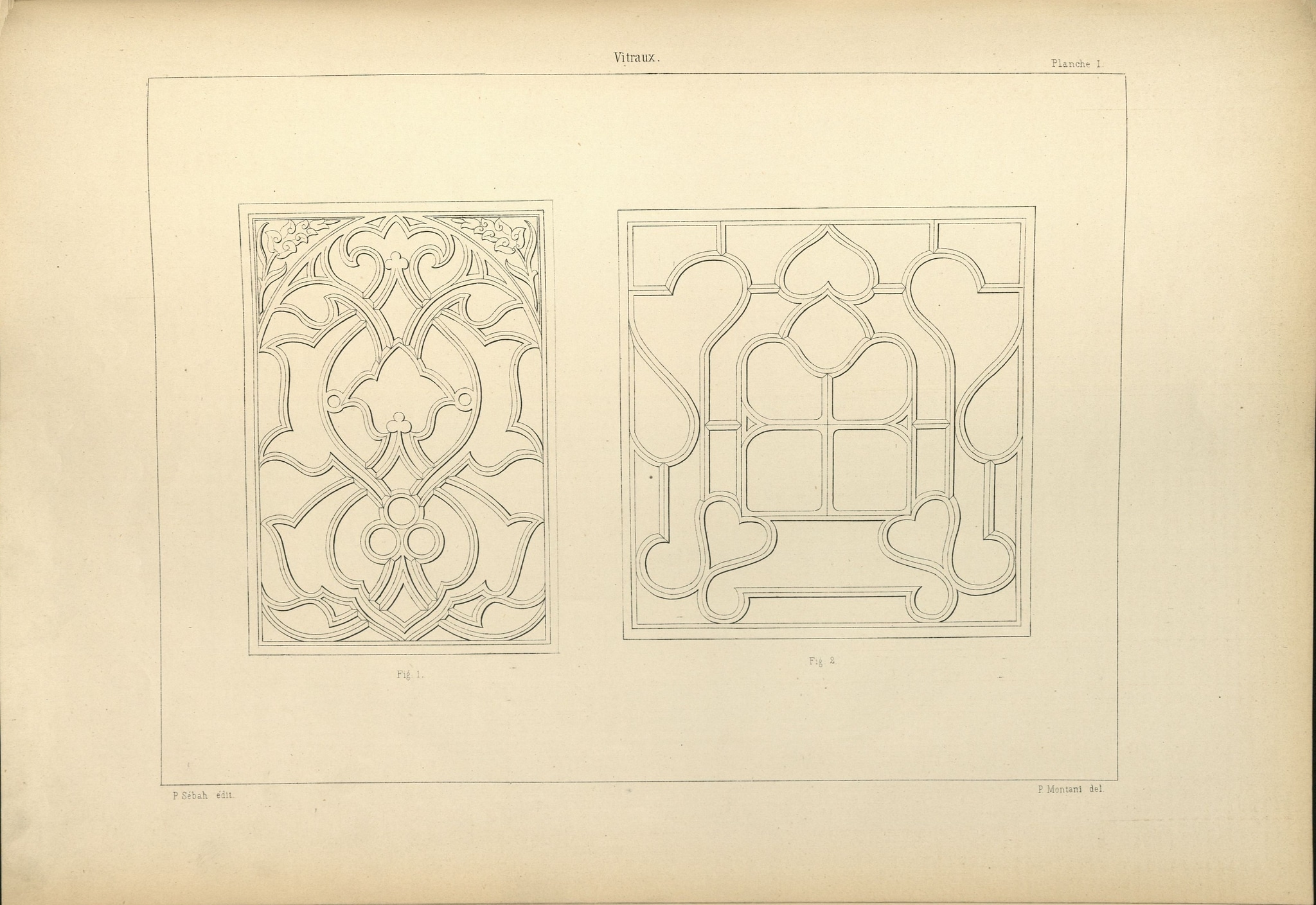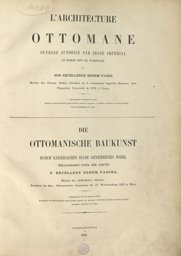Pl. I of the part on glass windows in the ‘Observations Concerning Ottoman Ornamentation’ (‘Bemerkungen zur Osmanischen Ornamentation. Glasscheiben’ / ‘Notices sur l’ornementation ottomane. Vitraux’) in Marie de Launay’s Die Ottomanische Baukunst / L’Architecture ottomane / Uṣūl-i Miʿmāriyye-i ʿUsmaniyye, Istanbul: Imprimerie et lithographie centrales, published in 1873, is a monochrome print based on a drawing by Pietro Montani. It shows two stucco and glass windows.
Fig. 1 shows a rectangular window with a stucco lattice with a pointed arch and spandrels filled with a floral motif. The stucco lines form the outline of stylized tendrils in a vertical progression. Split palmettes on two intertwined tendrils spring symmetrically from and return to central stems with three circles or trilobed palmettes.
Fig. 2 shows a square window with a stucco lattice, the openings in which are in purely abstract forms. At the centre are four squares with rounded corners, partly deformed. Most of the surrounding stucco lines are round, some of them creating heart shapes, resulting overall in a curvaceous effect.
In both illustrations, only the outline of the stucco is drawn. The three-dimensionality of the stucco is indicated by an additional line within the outlines. The blank spaces indicate the pieces of glass that are quite large in both windows.
48AA98312 · Ornamente in Form von Ranken - AA - stilisiert

